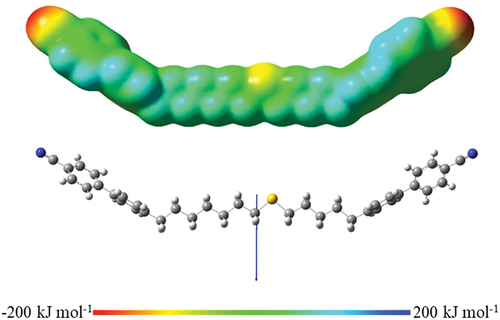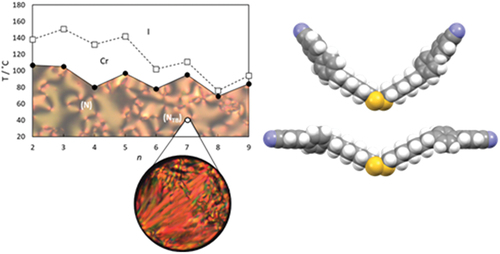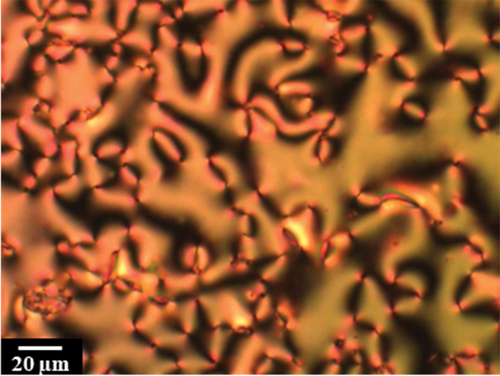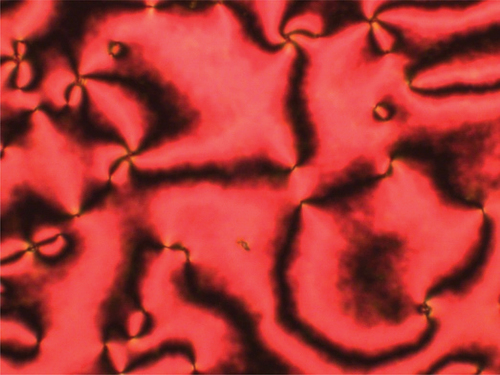Figures & data
Table 1. The temperatures and associated scaled entropy changes of the CBnSSnCB series. The data have been measured using DSC unless stated otherwise.
Figure 3. (Colour online) The optical textures seen for isolated droplets of CB7SS7CB in the (a) nematic (T = 94°C), (b) twist-bend nematic (T = 40°C) and (c) crystal phases (T = 38°C).

Figure 5. (Colour online) (a) The schlieren texture of the N phase (T = 87°C) and (b) the brushstroke texture of the NTB phase (T = 106°C) for the XCB15CB = 0.6 mixture.

Figure 6. Binary phase diagram for mixtures of CB7SS7CB and CB15CB plotted as a function of the mole fraction CB15CB, XCB15CB, in the mixture. The filled circles indicate nematic–isotropic transitions, open circles twist-bend nematic–nematic transitions and the broken line connects the melting points.
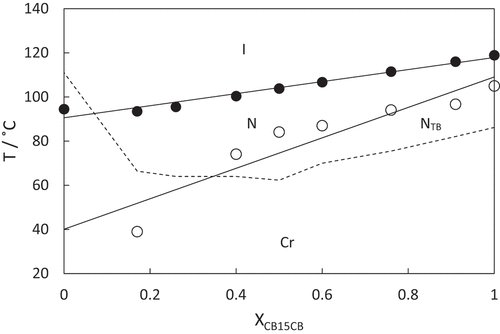
Figure 7. The dependence of the transition temperatures on the number of carbon atoms in each alkyl segment, n, for the CBnSSnCB series. The melting points are connected by the broken line and the values of TNI by the solid line. The open circle denotes the NTBN transition seen for CB7SS7CB.
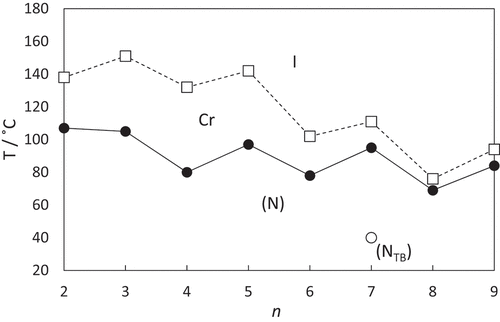
Figure 8. (Colour online) Molecular structures of (a) CB6SS6CB and (b) CB7SS7CB as determined by geometry optimization (DFT/B3LYP/6-311G(d,p)). The views on the right are along the S-S bond.
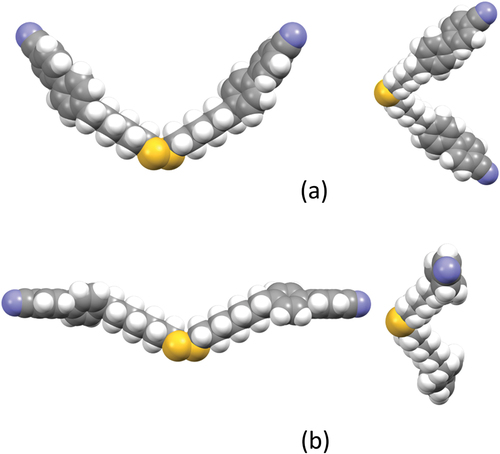
Figure 10. Binary phase diagram for mixtures of CB5S7CB and CB13CB plotted as a function of the mole fraction CB13CB, XCB13CB, in the mixture. The filled circles indicate nematic–isotropic transitions, open circles twist-bend nematic–nematic transitions and the broken line connects the melting points.
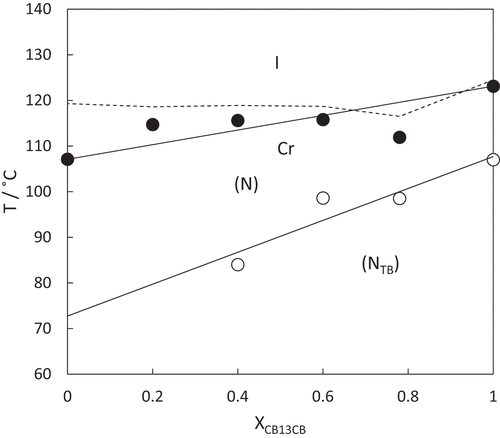
Table 2. The transition temperatures and associated scaled entropy changes of the CBnSmCB series. The data have been measured using DSC. The transitional properties of the members of the CBnCB series having the same spacer length are also listed.
Figure 12. (Colour online) The electrostatic potential surface (top), and ball and stick model showing the molecular dipole moment (bottom) for the ground state all-trans conformation of CB5S7CB.
